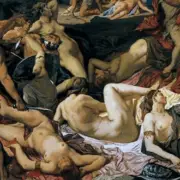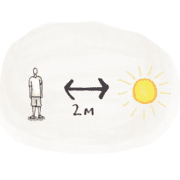Paintings of Classical Antiquity That Pay Homage To Breasts
Welcome to the Breastish Museum in London, a Victorian brownstone dedicated to celebrating women, whose fronts have been at the center of the art world for millennia. On our top floor, we pay homage to masterpieces that supported the idea of breasts as the one power women had in classical antiquity. Indeed, most forward-thinking, high-minded male painters who influenced modern philosophy and pioneered cultural movements (European Neoclassicism, for example,) had the genius to recognize the need for women to bare their chests whenever possible.
The highlights are as follows:

Cleopatra and Caesar (1866), by Jean-Léon Gérôm
Cleopatra meets Caesar in his palace, where her breasts control not only the famed statesman, but also those he led in ancient Rome. The Queen of Egypt’s breasts, which were known for speaking multiple languages, mastered people from all over the world. Although Cleopatra’s wealth supposedly derived from her savvy management of Egypt’s farming, papyrus-making, and other industries, we now know her breasts persuaded her male minions to give their money to her. Those magnificent orbs, so beautifully rendered by Gérôm, kept politicians from interfering with Egypt for decades.

Europa and the Bull (1528-1588) by Paolo Veronese
Here, the princess Europa chats with her fellow virgins, an activity that makes her blouse fall down her shoulder. (This exhibit emphasizes that women who want attention should always have at least one breast out.) Europa does not realize her left breast is exerting its power over Zeus, forcing him to transform himself into a bull so he can carry her off from the beach and rape her. Veronese warns the viewer how treacherous breasts can be, particularly when their owners do not watch them closely.
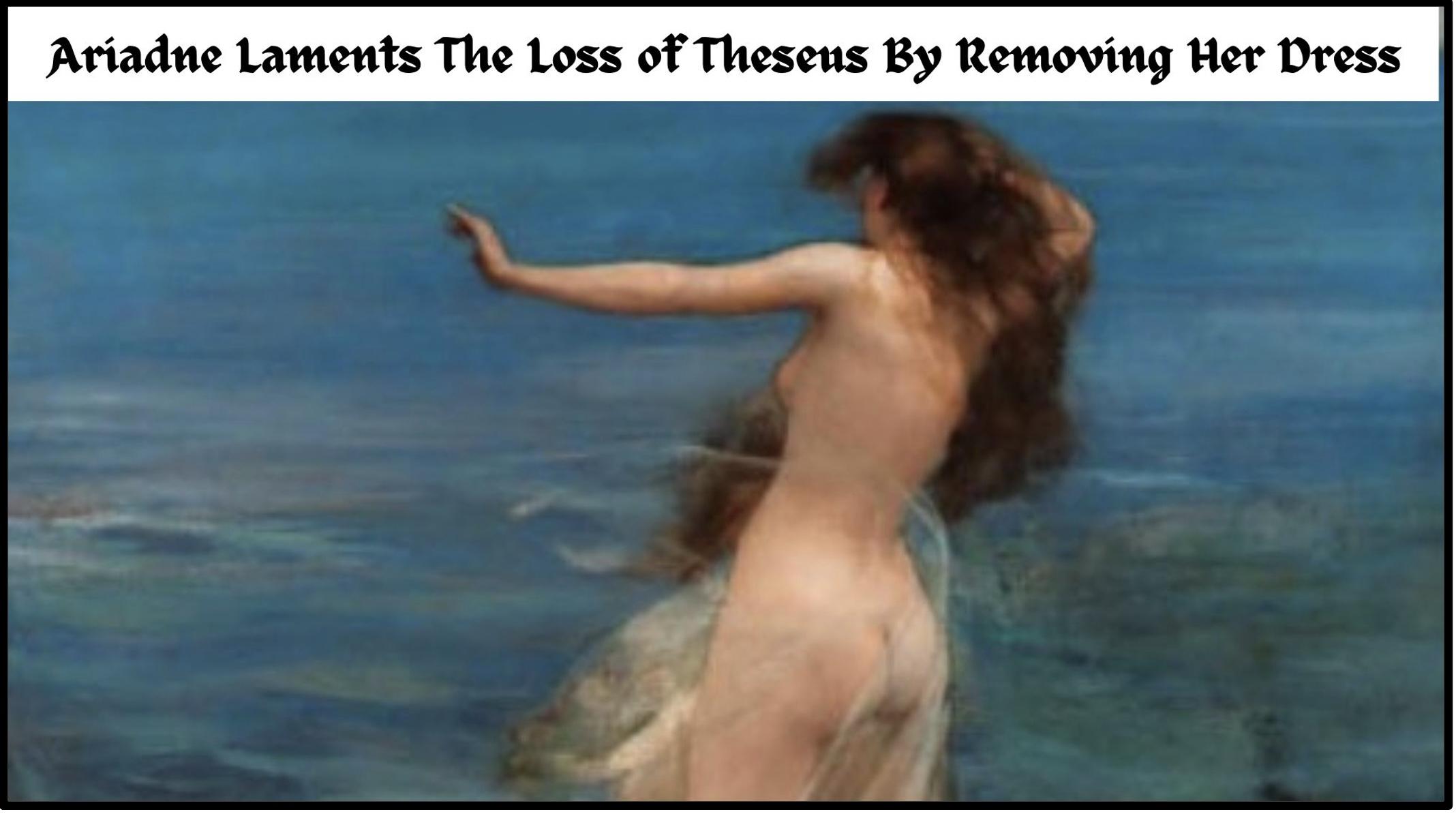
Ariadne (1886) by Sir John Lavery
When Theseus abandoned his lover Ariadne on an island, she threw herself into the time-honored tradition of trying to get a man back by undressing. Sir John Lavery exhibited a masterful and prescient understanding of how a side breast exerts its powers more indirectly than a full one. In this touching painting, Ariadne allows her nipples to escape her sheer dress so that she can wave them at Theseus in a heart-broken farewell. Thus exposed, her breasts sing a dirge to him in a vain attempt to control him from afar.
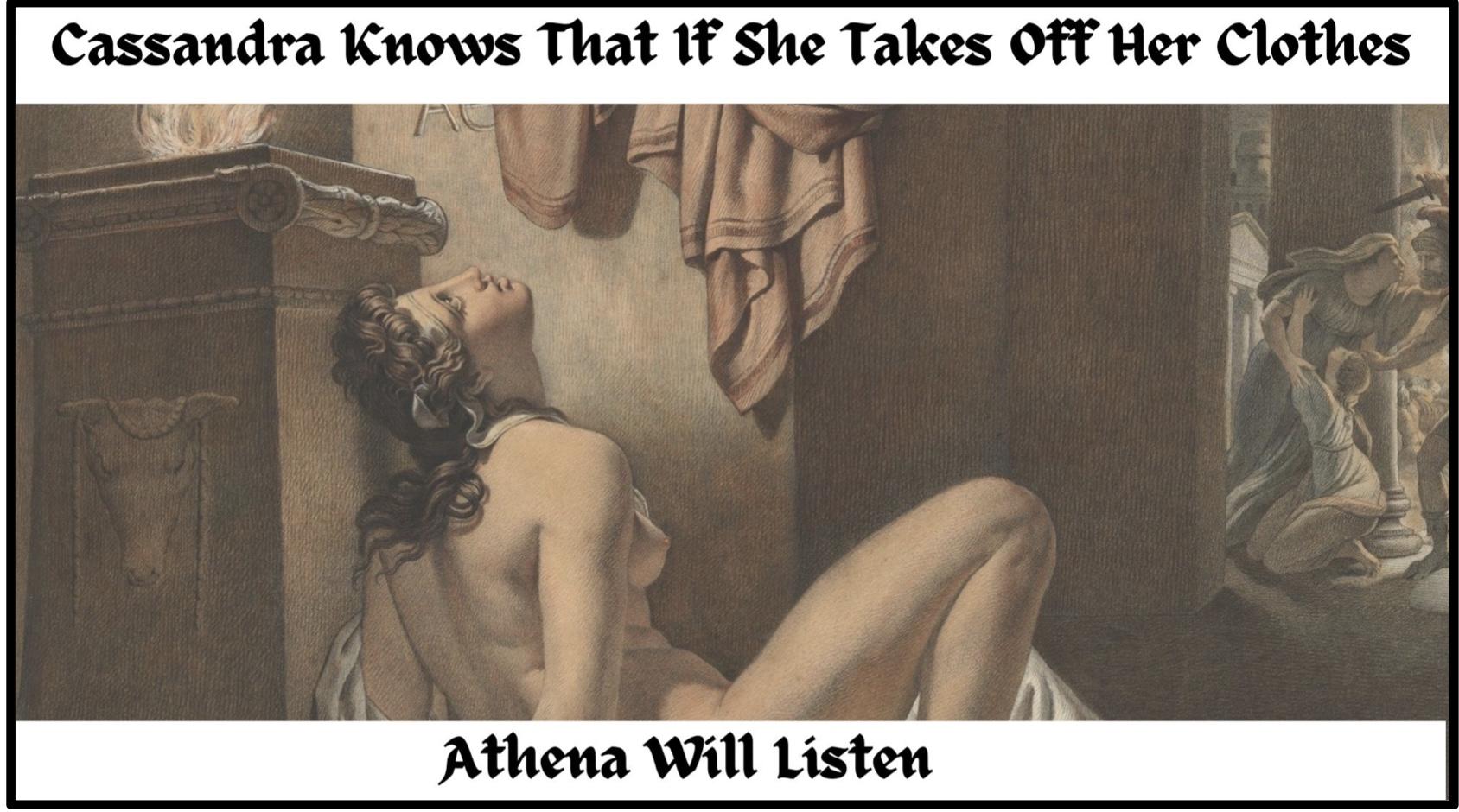
Cassandra Imploring Athenafor Revenge Against Ajax (1795–1838) Jerome-Martin Langlois
In a fit of passion, the god Apollo blessed the Trojan princess Cassandra with prophetic sight. When she refused to strip for him, however, he ordained that nobody would take her predictions seriously. As a result, the Trojans did not believe Cassandra’s warning that the Greeks would overwhelm their defenses; soon, the Greek soldier Ajax was raping her as his loot. In this masterpiece, Langlois shows that it’s never too late for a woman to learn from her mistakes. After Cassandra experiences her epiphany that she should expose her breasts the next time, her nipples compel the goddess Athena to avenge her against Ajax.
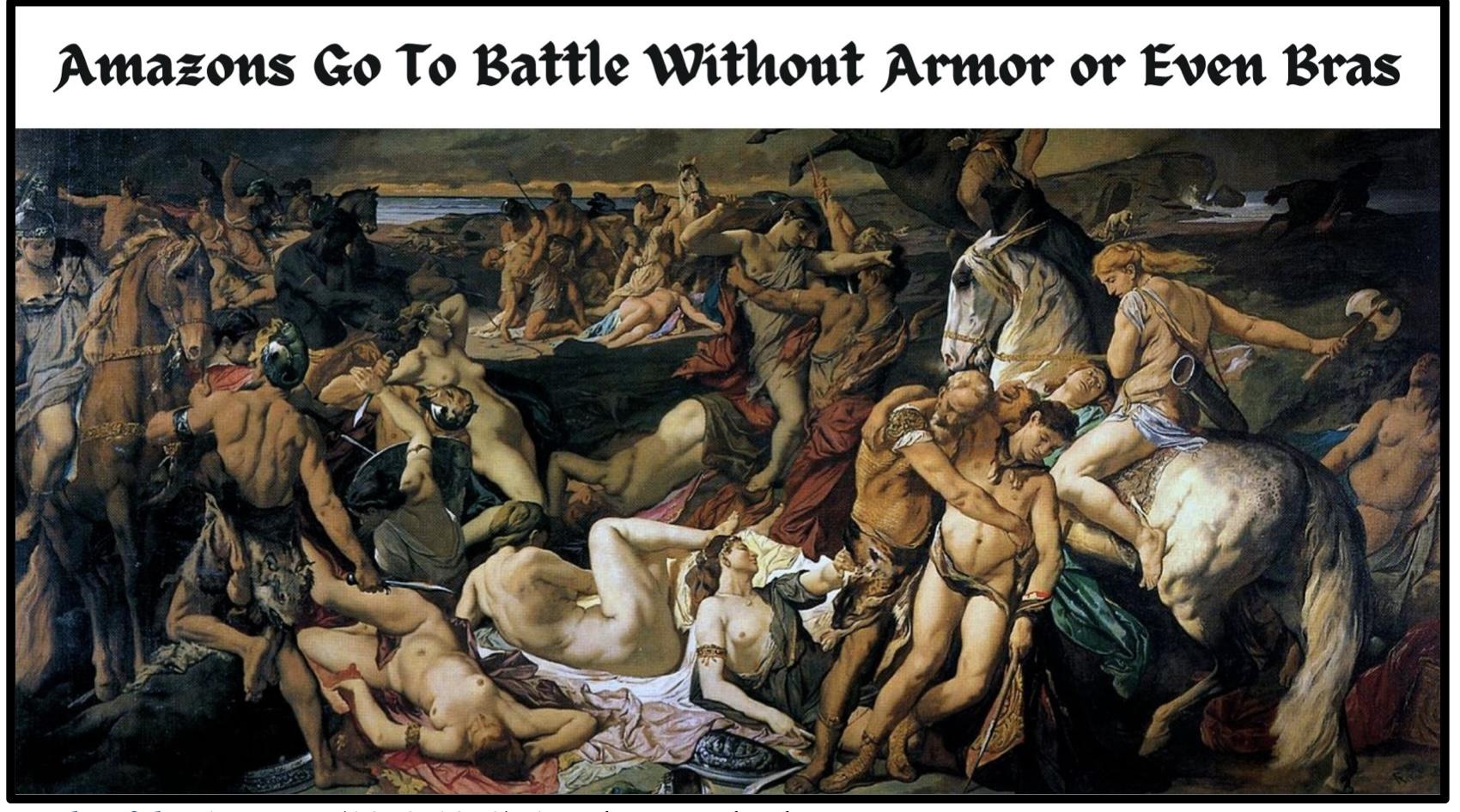
Battle of the Amazons (1870-1873) Anselm Feuerbach
The Amazons go to battle in their traditional armor: nothing. All women know they’re most likely to win a contest against a man in the nude. The Amazons, being unusually fierce, needed to display their nipples so they could bring their adversaries to their knees in adoring surrender. Unfortunately, the Amazons got carried away by squirting breast milk at the soldiers’ eyes; it didn’t project far enough and caused the horses to slip. In a stroke of genius, Feuerbach makes the milk invisible in this painting. The viewer sees that although breasts are all-powerful, milk operates on a subtler level.
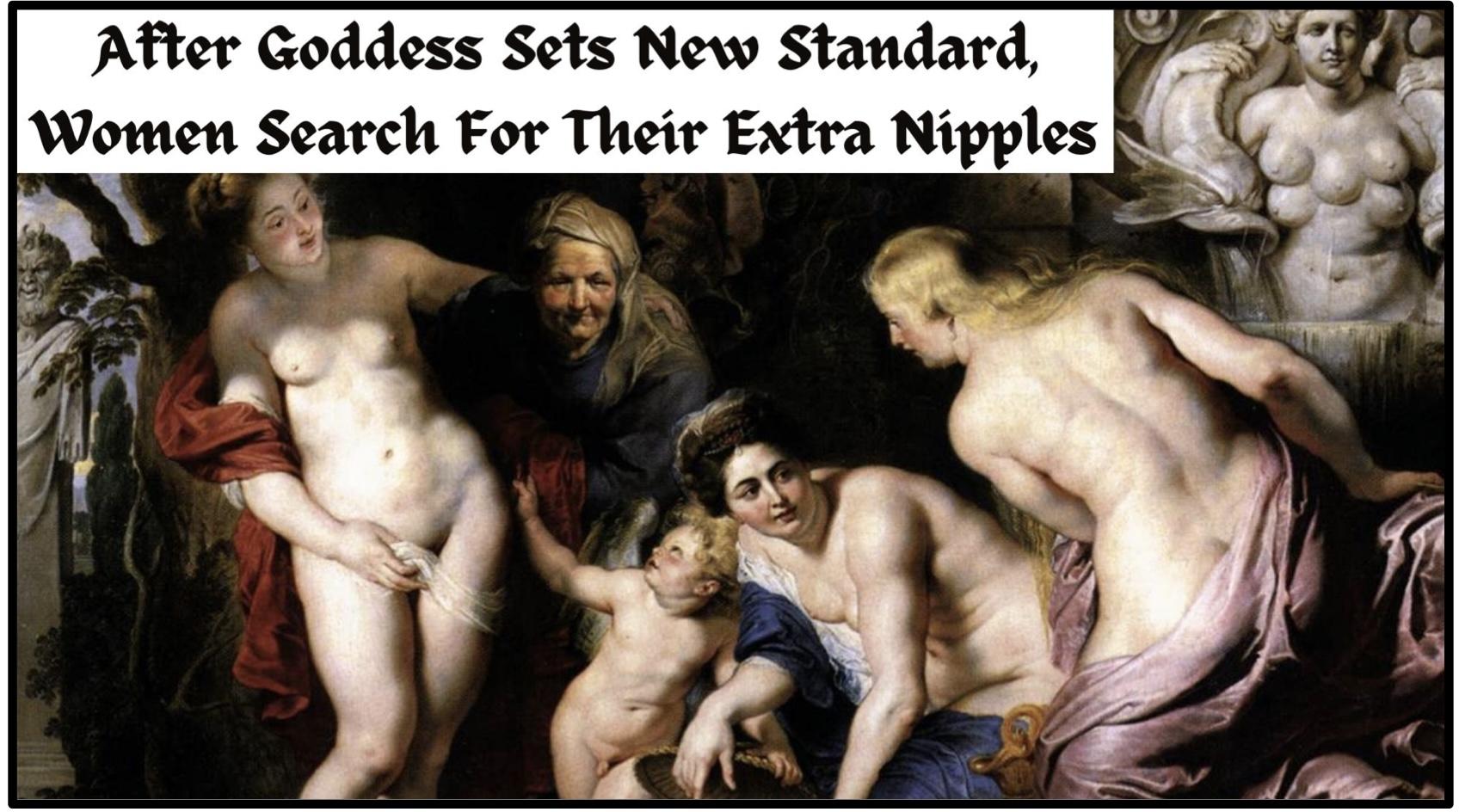
The Discovery of the Child Erichthonius (1577-1640) Peter Paul Rubens
The Ephesian Artemis, the goddess of fertility, announces that women would have more power over others if they had five breasts instead of two. Three princesses panic and rummage for silicone implants in a basket. Alas, it holds only Athena’s son, the product of a rape, which is why most women today have two nipples (a tragedy) and must continue to battle for equal rights. Rubens, painting around four centuries ago, had the prophetic vision of a future in which women might make their breasts more capable yet. Still, as you see from the paintings in this exhibit, many in classical lore managed with no more than two breasts to attain some power. This matters in a world that values only those who dominate others, and at the Breastish Museum we celebrate this fact.

